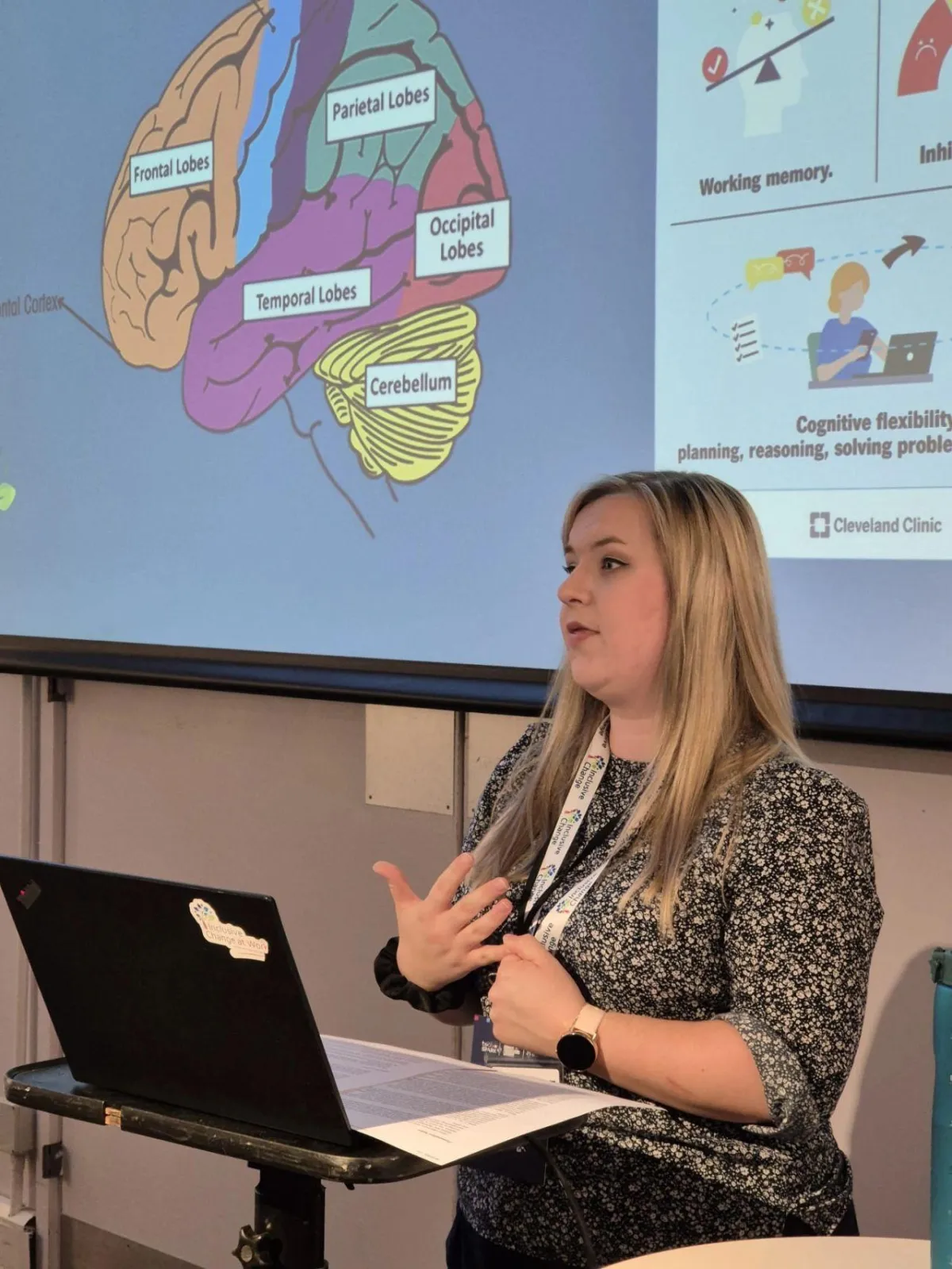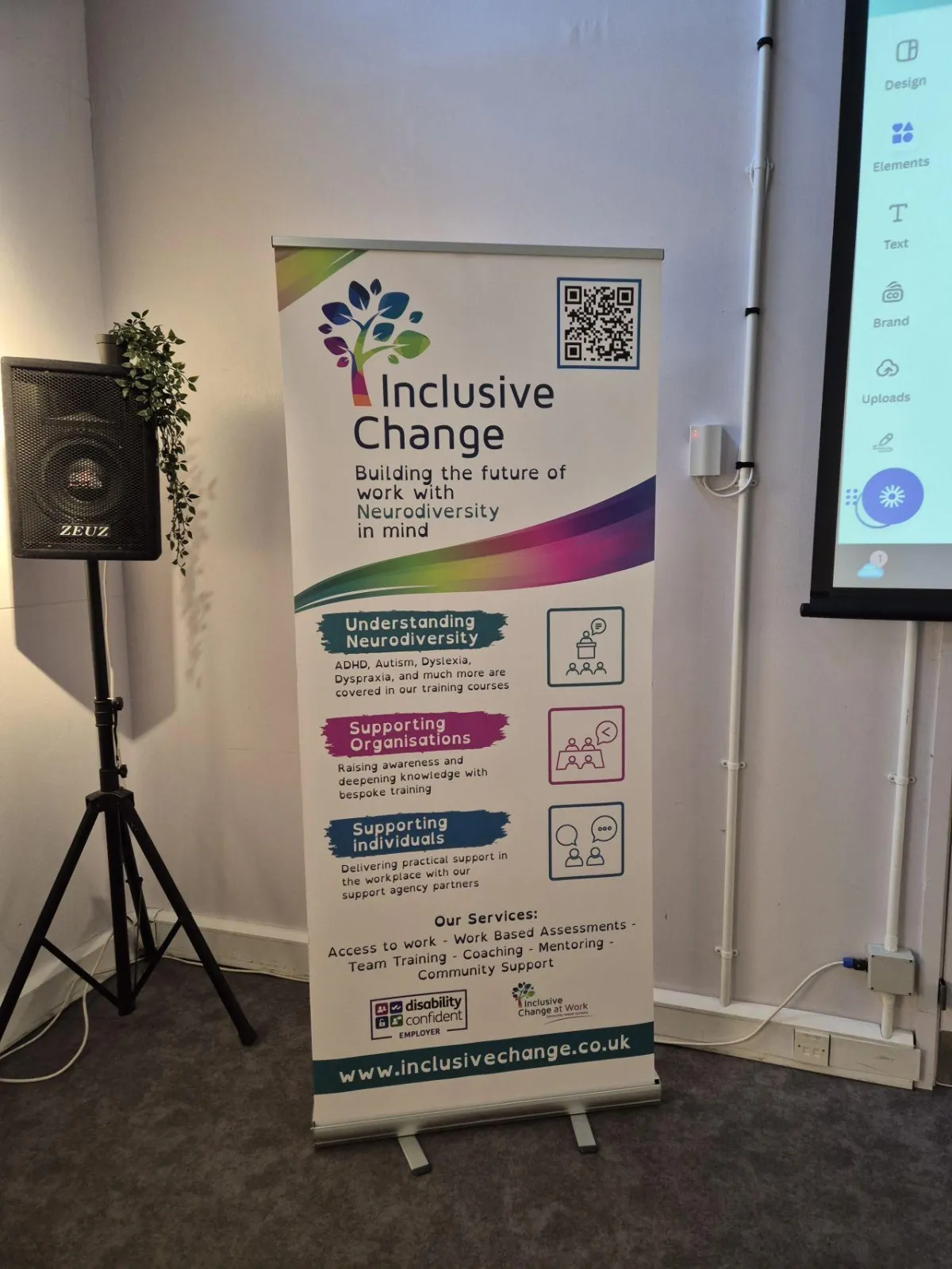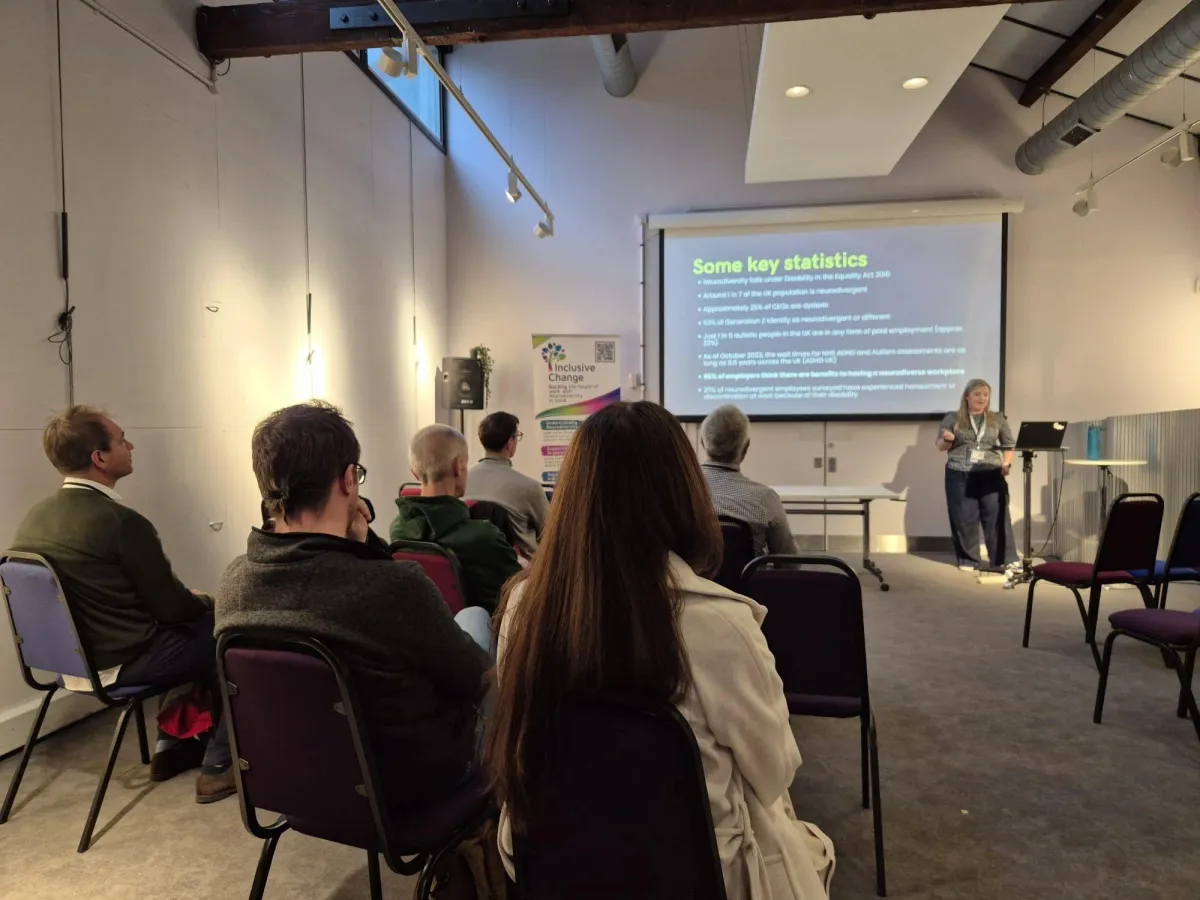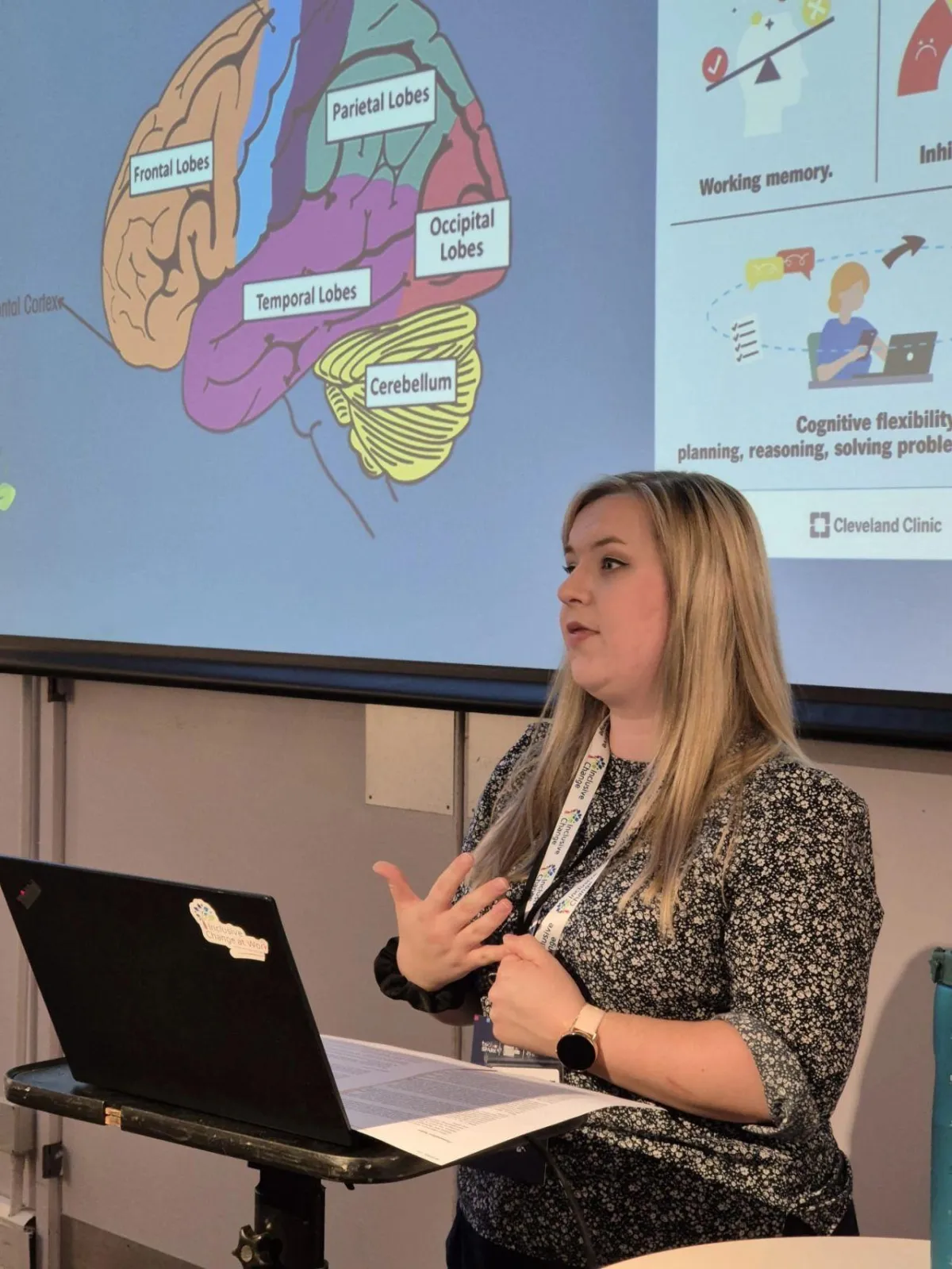
Becca Burke
Speaker
Empowering Neurodiversity in the workplace
Hi, I am Becca!
I'm Becca, a passionate advocate for neurodiversity and understanding ADHD in the workplace. Living with ADHD (combined presentation) myself, I bring a unique blend of professional experiences and personal insights to the conversation about creating inclusive, productive work environments. Equity in the workplace is especially important for us as neurodiverse folk; if given the adjustments and support we need, we can not only survive, but thrive at work.
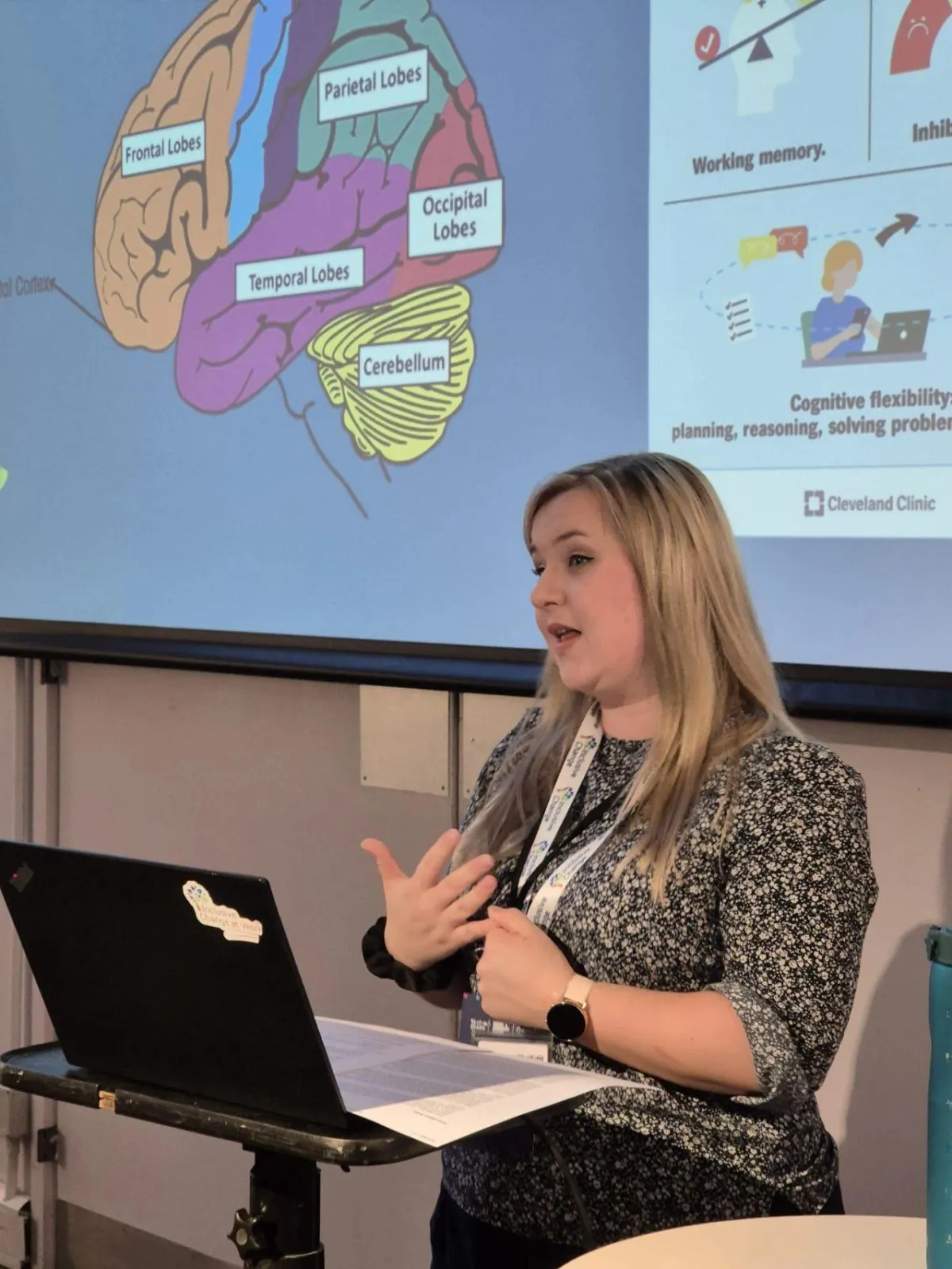
My professional journey
My career path has been varied, in true ADHD style! From my early days in customer relations to roles in sales and account management, I've always excelled in building relationships and understanding people's needs. My time at a FTSE 100 bank gave me a solid foundation for navigating large organisations and the politics of the office environment, and I then had to adapt quickly to the drastic changes of the Covid-19 Pandemic Lockdown. It was during this time, recognising the disruption to my routine, hyperfocusing on work outside of my core hours, and my inability to finish any tasks to completion, that I realised something wasn’t working for my brain.
Throughout my career, I’ve recognised that I was struggling, but never quite understood why. I saw so much of my own journey in the struggles I heard from other neurodiverse people, and I wanted to find a way that I could tangibly make a difference. After my own diagnosis in early 2024, I was inspired to become an ADHD Coach with Leanne Maskell's ADHD Works, and led to me being headhunted for Inclusive Change Ltd as Support Specialist.
My Areas of Expertise
- ADHD awareness and management strategies
- Education and training around ADHD for businesses
- Job coaching neurodivergent clients at work
- Rejection Sensitive Dysphoria awareness/training
- Business process improvement for neurodiverse workforce support
- Working with clients as a neurodiversity educated Virtual Assistant
- Neurodivergent talent recruitment and retention
- ADHD Works Level 1 Coach
Popular Discussion Topics
- Rejection Sensitive Dysphoria (RSD) & ADHD
- ADHD and the menopause
- ADHD screening in prisons
- ADHD and neurodiversity co-occuring traits
- ADHD celebrities
- Current research development
Living with ADHD
- Physiological difference in the brain
- ADHD facts and figures
- Common misconceptions
- Lived experience
- Interactive Q&A
ADHD in the Workplace
- Common challenges and strategies
- Strengths ADHDers bring to the workplace
- Challenges for us in the workplace
- Helpful strategies
- Reasonable Adjustments
- Equality Act 2010 protection
My Speaking Style
I pride myself on being engaging, insightful, and empathetic. My presentations blend personal anecdotes, research-based strategies, and interactive elements that leave audiences both informed and inspired. I like making complex topics accessible, and providing concrete, implementable solutions to common workplace challenges.
Why Choose Me?
At Inclusive Change, we understand your ‘Why,’ and meet you where you are on your journey as a business. Whether you're looking to educate your HR or leadership teams, or provide valuable insights to your entire organisation, I can help. I don’t believe that we as neurodivergent people need to change who we are to succeed; with the right support, education and awareness, we can be ourselves without compromise.
Work with me
Ready to transform your understanding of ADHD in the workplace?
Would you like me to run a workshop for you?
Get in touch using my calendar below.
Read my blog here: https://inclusivechange.co.uk/blog/b/adhd-and-me
Read more
The blog

ADHD & Time Management - Pomodoro Technique
ADHD & Time Management Blog - Pomodoro Technique
Have you considered organising your workday into 16 ‘tomato’ intervals? The Pomodoro Technique might suit you if:
You often find yourself side-tracked by other responsibilities during work
You tend to overload your daily schedule
You routinely handle tasks with unpredictable time requirements
You frequently work beyond your peak productivity hours
This time management strategy is simple to adopt and has been utilized across various sectors for years. This guide will delve into the Pomodoro Technique, its application in project management, and explore some popular alternatives.
What is the Pomodoro Technique?
The Pomodoro Technique is a widely-used time management method for task completion. It involves alternating between focused work periods (Pomodoros) and scheduled breaks. Typically, work sessions last 25 minutes, followed by five-minute breaks.
In the late 1980s, Francesco Cirillo, a university student feeling overwhelmed by his coursework, decided to commit to just ten minutes of focused study. This experiment led to the development of the Pomodoro Technique, named after the tomato-shaped kitchen timer he used ("pomodoro" means tomato in Italian).
By dividing larger tasks into smaller, manageable chunks, the technique makes them less daunting. It also promotes periods of uninterrupted concentration and flow, interspersed with breaks that allow mental relaxation and help maintain work quality.
While Cirillo now offers comprehensive Pomodoro time management courses, the basic concept remains straightforward.
The Pomodoro Technique consists of six main steps:
1. Choose a task
Choose a task from your pre-planned pomodoro schedule. Planning your tasks in advance makes implementing the Pomodoro Technique much smoother (more on this later).
2. Start the timer
Set a timer, usually for 25 minutes. Cirillo suggests using a kitchen timer to avoid digital distractions. The physical action of winding the timer initiates your work session, its ticking keeps your mind on task, and the ring signals break time. However, a stopwatch or Pomodoro app can also suffice.
3. Focus on the task
Once the timer starts, concentrate solely on your chosen task until it rings. Minimize distractions and defer other tasks or messages until your break. If you finish early, use the remaining time to review your work, tackle a similar task, plan upcoming tasks, or study related material.
4. Take a short break
When the timer sounds, pause your work for a short break, typically 5-10 minutes. You may also use this time to briefly log your accomplishments.
5. Repeat the cycle
Repeat the work-break cycle three more times. You may continue with the same task or switch to a new one, based on your daily plan. If an unavoidable interruption occurs, take your break early and restart the pomodoro afterward. Note these disruptions to help prevent them in future sessions. After completing four pomodoros, move to step 6.
6. Enjoy a longer break
Having worked for about two hours and completed a "pomodoro set" (four pomodoros), take an extended break of 20-30 minutes to recharge. Once this break ends, return to step 2 (or step 1 if beginning a new task).
Here’s a visual example of how this would look in practice:

Why This is Great for Neurodivergent People
The Pomodoro Technique can be particularly beneficial for neurodivergent people as we may experience challenges around time perception, task initiation, and focus regulation.
We've dug a bit deeper into why its beneficial for us:
Using a physical timer, or one like this timer that changes colour as it ticks, removes the barrier of object permanence affecting our relationship with time passing us by. Externalising time with a physical timer means that we turn something abstract that we can't normally see into a concrete, tangible thing within our control.
The Pomodoro Technique, or time blocking, provides clear boundaries around work and rest, which can reduce overwhelm and anxiety around open-ended tasks or unstructured time for us
Time blocking reduces executive function load. For many of us, decision-making fatigue and mental effort can build up quickly. Breaking tasks into smaller, time-boxed sprints reduces the cognitive load of sustaining attention for long periods.
Built-in movement and sensory breaks: The scheduled short and long breaks help to prevent burnout, encourage regular movement, and create space for sensory regulation—whether that’s a quick walk, a stretch, or a calming activity that helps reset your nervous system.
Creates urgency without pressure: Many neurodivergent people benefit from external motivators or time-limited tasks, as these can help initiate action without feeling overly restrictive or anxiety-inducing.
Minimises hyperfocus burnout: While hyperfocus can sometimes feel productive, it often leads to exhaustion or skipping meals and self-care. The Pomodoro system helps balance deep focus with built-in pauses to check in with your body and energy levels.
Encourages self-awareness and pattern spotting: Tracking interruptions and noting how many pomodoros a task takes can help build useful insights into how your brain works best. Over time, you can tailor your schedule to match your natural energy patterns and capacity.
Our Tips for Adapting the Pomodoro to Work for YOUR Brain
The original Pomodoro Technique is a great starting point, but you don’t have to stick rigidly to 25/5 intervals! Try experimenting with different work and break lengths – perhaps 15/5, 40/10, or even 60/15 works better for you depending on your focus window. Our coaching team will work with clients to find their optimal focus window, and for some of us at Inclusive Change, our optimal focus window is 10 minute bursts!
You can also try using visual or sensory timers like hourglasses, visual countdowns, or tactile timers if auditory cues are distracting or overwhelming. We’ve included a link to a colour changing timer here: https://amzn.to/4bFvkxF
We've also found pairing Pomodoros with body-doubling incredibly effective. Body doubling is working alongside a colleague or virtually with someone for accountability and motivation, and this also increases both people's productivity. If you're someone who will hyperfocus, set an additional cue (like a vibrating watch or reminder) to encourage stepping away for breaks, and ask a colleague to come along and prompt you gently with a message or invitation to go for a walk.
Take regular short breaks to reset your nervous system, not just scroll your phone. Consider stretching, breathing exercises, or going outside for fresh air.
If you’re sensitive to pressure, you could treat the timer as a “focus container” rather than a strict deadline; something gently nudging you into flow without creating time anxiety. We like to combine Pomodoros with task batching by grouping similar tasks into one focus block to reduce context switching for our autistic clients.
Would you like to know more about our coaching services? Book in a call with us here for a chat about how we can help:
https://link.tekmatix.com/widget/form/FuljqUbctuJdmNijAPId
Some of the Companies Inclusive Change Have Worked With So Far


Column Header
Lorem ipsum dolor sit amet consecetuer lorem ipsum
Organically grow the holistic world view of disruptive innovation
At the end of the day, going forward, a new normal that has evolved
Column Header
Lorem ipsum dolor sit amet consecetuer lorem ipsum
Organically grow the holistic world view of disruptive innovation
At the end of the day, going forward, a new normal that has evolved
Column Header
Lorem ipsum dolor sit amet consecetuer lorem ipsum
Organically grow the holistic world view of disruptive innovation
At the end of the day, going forward, a new normal that has evolved
Inclusive Change Ltd
The Brightwell, Bradbury House
Wheatfield Drive
Bradley Stoke, Bristol
BS329DB
Copyright 2025 - Inclusive Change Ltd
Companies House: 12412464
VAT NO: 352 1564 17
ICO Reg: ZB081779
UK Register of Learning Providers: 10090652

